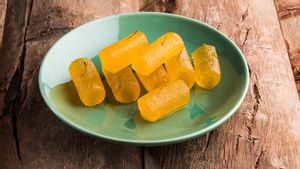This melt-in-the-mouth sweetmeat had inspired several internet memes when self-proclaimed nationalists called out the famous Indian sweet to prove its loyalty to the country by changing its name to Mysore India.
One of the oldest
The event has Nataraj of Mysore’s Guru Sweet Mart in splits. "If someone has to change the name, it has to be Pakistan because Mysore Pak was born much before Pakistan," he chips in good-naturedly. There is much meat in his joy. One of the oldest sweets in the country, Mysore Pak still holds the royal stage in the world of desserts. This sweet was born in the kitchens of Mysore Palace. Nataraj is the direct descendant of the royal chef or 'Nalapakka' who created this wonderful sweet for the Maharaja of Mysore.
Legend has it
On a balmy afternoon close to eight decades ago, Nalwadi Krishnaraja Wadiyar, the then Maharaja of Mysore, felt like having a sweet unlike any other. He summoned Kakasura Madappa, his royal chef, and shared his desire. Madappa, who could whip up delicacies in a jiffy, decided to go with his trusted ingredients—gram flour, cow's ghee, sugar and cardamom—to create what would turn out to be the Maharaja's favourite sweet.
The much-delighted king decided to name the pale yellow sweet after his kingdom. "Paaka (a delicious, languorous way of saying Pak where the aa is stretched like viscous sugar syrup) means sweet, syrupy or sugar-coated. A paaka made in Mysore became Mysore Pak," says Nataraj.
Original recipe lives on
Guru Sweet Mart at Devaraja Market in Mysore still prepares Mysore Pak the way Kakasura Madappa created it. Nataraj, who runs the store with his brothers Kumar and Shivanand, inherited the original recipe. "We are the fifth generation descendents of Kakasura Madapa. Only we have this secret recipe," he states proudly.
If you are accustomed to the porous, brick-like sweets peddled as Mysore Pak in regular sweet shops, the Mysore Pak at Guru's will have you doubting its originality. It’s very distinct in both taste and texture. The original Mysore Pak is doughy to touch and melts in your mouth instantly. It's so soft that it’s not possible to mould it in any shape. It’s often sliced off as per requirement with a knife from a slab of sweet made on that day.
Ghee makes all the difference
Nataraj says they use pure ghee to make the original Mysore Pak instead of vanaspati (hydrogenated vegetable oil) which is often used in the commercial variants of the sweet. Not surprisingly, the sweet brings in swift business daily, with the sales peaking during festivals like Dasara and petering out during the monsoon. "On a dull day, we sell about 20 to 30 kg. The sale is often good during Dasara," Nataraj says.
Guru Sweet Mart also stocks up on other popular Indian sweets like Sonpapdi (which, Nataraj claims, has also been created by his great-grandfather who made Mysore Pak) and Dharwad Peda to name a few. The family-run sweetshop doesn’t have manufacturing units like commercial sweet shops. All the sweets are prepared in their home every day. The brothers, their wives and other family members lend a helping hand to make the stock for the day.
The family is very proud of their lineage. Most of the members continue to maintain an association with the sweet business despite having full-fledged careers. "My sister is a doctor and so is one of my cousins. My son and my nephew are engineers who have done their M.Tech. But all of them are involved in this business, part-time at least," he says. Do the brothers have any plans to expand their business? "Not at all. We are delighted with what we have," Nataraj signs off with a royal grin.



